Saying Aloha to the Whales
It's that sad time of year when the North Pacific Humpback Whales depart Hawaii. At the time of this writing, the whales are still abundant, but we ...
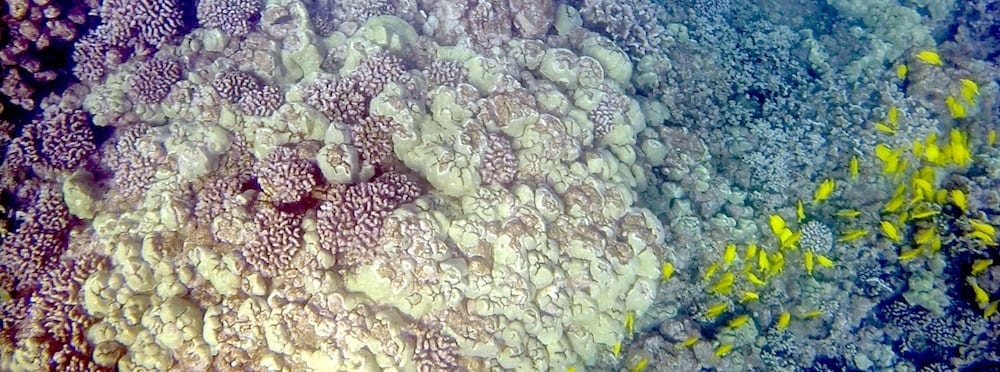
Snorkeling in Maui is fun. When you enter our waters, you're liable to see fish of all colors, turtles, sea urchins, and maybe even (harmless) sharks and rays. But when snorkeling, don't overlook the coral. Coral are beautiful, living ANIMALS. Coral has a unique, symbiotic relationship with other sea creatures and plants, and helps "power" our beautiful reefs. However, many corals are dying out due to rising sea temperatures and poisoning from popular sunscreens. See our sunscreen guide to learn more about how sunscreen poisons the reef and what to look for when purchasing reef-friendly sunscreens. Here are four common corals you'll see in Maui. For fish, check out our Fish Guide for Snorkeling Maui.
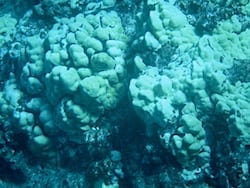 Lobe Coral
Lobe Coral
Found in a variety habitats, lobe coral is one of the most common corals in Hawai'i's oceans. It's mostly seen in depths from 10 - 45 feet, though it can also be seen in shallow tide pools and can thrive as deep as 150 feet. They grow less than a centimeter a year, yet lobe coral can become massive entities, up to 20 feet across. Only the outermost layer, about 1 millimeter, is actually alive. There are several species of lobe coral in Hawai'i. You'll often see yellow, greenish and tan varieties off of Maui's shores.
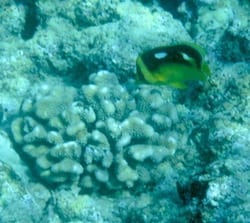 Cauliflower Coral
Cauliflower Coral
The most common species of coral in surge-zone slopes of shallow reefs less than 10 feet deep, the cauliflower coral ranges in color from tan to pink. It can also be found in depths of 90 feet or more. Cauliflower coral is unusual in that it can only grow to maximum length of about 12-to-15 inches, whereas most corals do not have a capped size. The living portion of cauliflower coral is the outermost layer, roughly 2 millimeters deep.
RELATED: Best places to snorkel on Maui
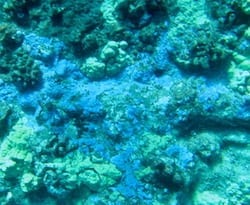 Rice Coral
Rice Coral
In still-water habitats, rice coral can be the dominant species of coral. It tends to live below the reef, where it is blocked from the effects of wave surges. One unique aspect of rice coral is its ability to take on a variety of shapes, depending on its proximity to light. If it is in direct sunlight, it tends to grow into spiked peaks, whereas in shady or deeper waters, it's more flattened out. You can even find both forms of the coral in one seabed when spiked pinnacles, blocking the sun, live over the flat-type of coral. Rice coral, generally, ranges in color from solid cream to dark brown with lighter branch tips. However, the flat, blue rice coral, endemic to Hawai'i, is popular amongst snorkelers due to its bright blue color. Rice corals can grow to several feet in diameter.
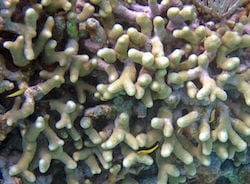 Finger coral
Finger coral
Living in wave protected, shallow waters to 100 feet, finger corals are very common in Hawai'i's waters. It derived its common name because the coral grows out and up, forming appendage-like structures. The "fingers" tend to be flattened at the tips. Finger Coral are light-brown/grey to yellow in color. It's slow-growing, but it is believed there are colonies over 1,000 years old! (Image credit: By James St. John [CC BY 2.0], via Wikimedia Commons)
RELATED: Maui Snorkeling Q&A
It's that sad time of year when the North Pacific Humpback Whales depart Hawaii. At the time of this writing, the whales are still abundant, but we ...
There is nothing more exciting than seeing a 30-ton whale throwing itself out of the ocean like a spinner dolphin on one of our whale watches. Luckil...
When you join us on a whale watch tour on Maui, breaching is one of the common actions you're likely to see. Breaching is when a whale throws its ent...
